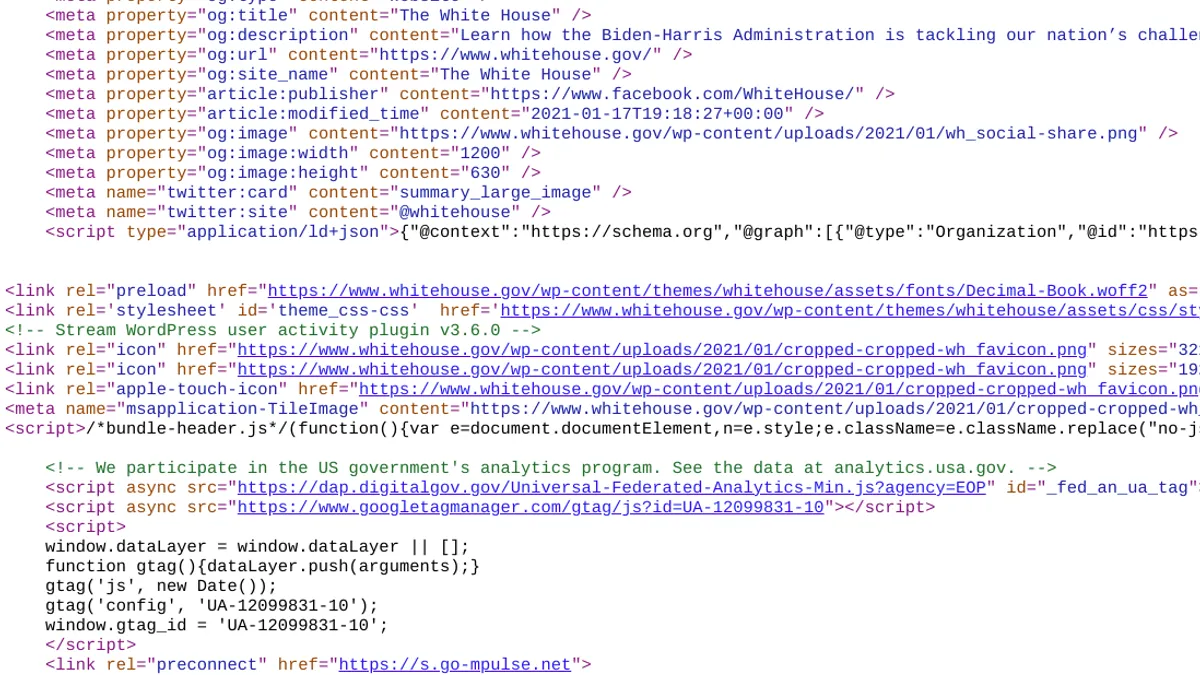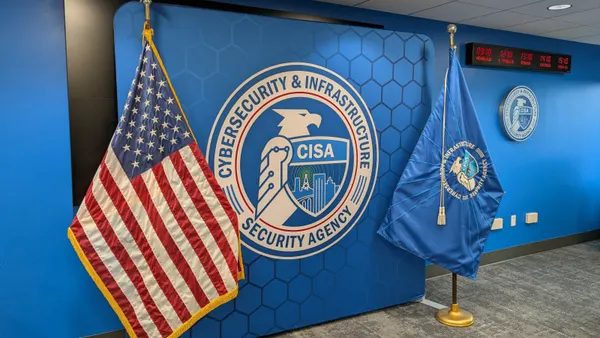In the details of a White House administration change, the little things such as website updates can go unnoticed as fanfare takes precedent. But on Inauguration Day this year, tech eyes turned to federal website source codes.
Hidden in WhiteHouse.gov source code was a call to technologists soliciting applications for the U.S. Digital Service (USDS). USDS is a branch of the federal government dedicated to improving civic services with technology.
"After the inauguration, we had the most applications within 48 hours than 2017 and 2018 combined," said Andréa Viza, director of talent at USDS. "We received over 5,000 applications within a 48-hour period."
USDS's average application rate was about 23 applicants each week before the influx, according to Viza.
A boost from the online technology community helped deliver the influx of applicants, but the creative approach drove the success. Companies such as Mozilla and Flickr use source code messages to attract talent, too, and creativity reigns supreme in finding top tech talent with the soft skills to excel.
"After the inauguration, we had the most applications within 48 hours than 2017 and 2018 combined."

Andréa Viza
Director of talent at USDS
Tech hiring has fared well in the pandemic and shift to remote work, but talent remains difficult to find. While businesses can fill a non-tech role in 42 days, it takes 61 days to fill an in-demand tech role, according to an iCIMS report.
USDS's latest success was almost accidental — Viza couldn't confirm who added the call for talent in the source code and the White House didn't respond to a request for comment —, but hands-on hiring has always been a part of the organization's mission.
USDS is currently exploring meet-up groups to pair with more communities on finding talent and launched Subject Matter Expert Qualification Assessments to evaluate an applicant on certain skills before they are considered qualified for a role.
Creativity became vital to recruiting efforts as the COVID-19 pandemic forced offices to go remote. While USDS previously traveled to conferences and other events to scout potential hires, the organization pivoted to virtual roundtables to keep up the effort, according to Viza. The organization managed to increase its average tenure from 18 months in January 2018 to 23 months now.
Niche hiring for niche skill sets
Beyond technical qualifications, creative recruiting tactics weed out the candidate pool to find cultural and soft skill fits.
At Red Balloon Security, Founder and CEO Ang Cui leads hands-on and creative techniques to find recruiting for a specialized field.
Qualified cybersecurity candidates in the critical infrastructure embedded devices space require "a very niche type of skill and a great niche type of person who even has interest in the ability to work in this field," said Cui.
"Certainly you have to have a baseline of technical know-how, but really we're testing for the right spirit … of [a] brave, curious, hacker person."

Ang Cui
Founder and CEO at Red Balloon Security
So, Red Balloon finds candidates in an out-of-the-box way; the company mails candidates a hard drive to hack.
A box filled with candy, a hard drive and a few hints to help arrives at the prospective hire's doorstep and, if they can access encrypted bitcoin inside, the candidate moves on to the in-house interview stage.
"Certainly you have to have a baseline of technical know-how, but really we're testing for the right spirit … of [a] brave, curious, hacker person," said Cui. In 2020, Red Balloon shipped out 160 challenges, yielding three new hires.

The company's online job board has a similar, scavenger-hunt feel. The page includes a simple box of text encouraging visitors to "search for hidden clues to initiate contact" and find job listings. Red Balloon finds these challenges to be a more successful way of hiring talent suited to the company needs.
"It's very easy to spend a whole lot of money and resources hiring the wrong way without finding talent like this," said Cui. "What we're doing here is, at least in my opinion, the right way to attract the very small group of very talented embedded security hackers that want to do this type of thing at a professional level."
For technical and mission-oriented roles, businesses may also benefit from playing to their existing audience.
For companies with users who would make good job candidates, "you can start to do things like having contests or gamification ... really geared toward your existing community," said Lonne Jaffe, managing director at Insight Partners.
For example, the CIA played to its base of national security and intelligence Twitter followers encouraging them to crack a coded puzzle in a Tweet. The messages asked people who solved the puzzle to visit the agency's careers page.
Many creative job recruiting tactics also rely on meeting potential employees where they are as opposed to waiting for them to come to the business. Strike IT US sourced 111 new hires from Reddit in one year; Google once engaged a recruit by recognizing a pattern of technical search inquiries and challenging them to a programming test.
"This works best when it's founder or CEO driven," said Jaffe. "They're really good at evaluating different kinds of talent because they're driving a lot of what's going on in terms of long term strategy."














